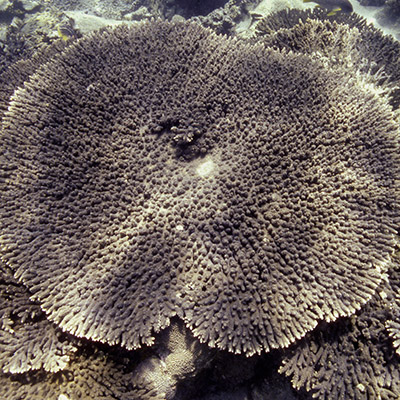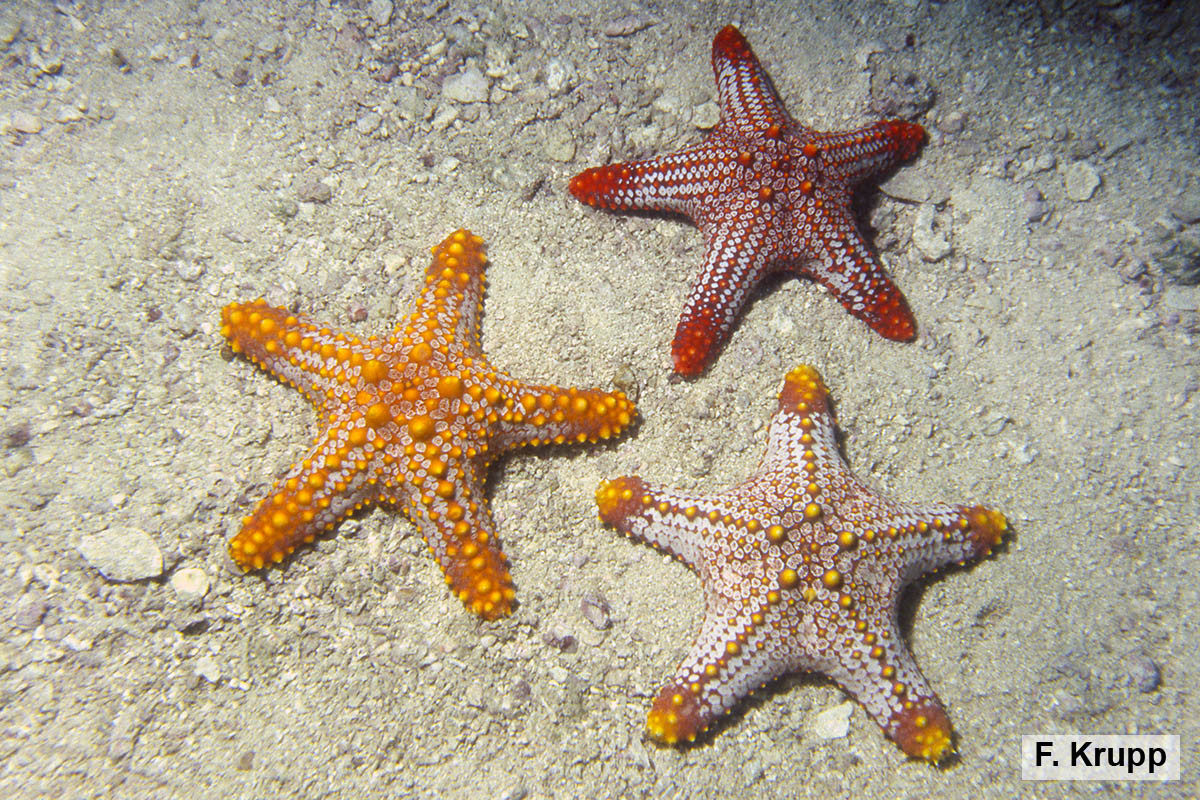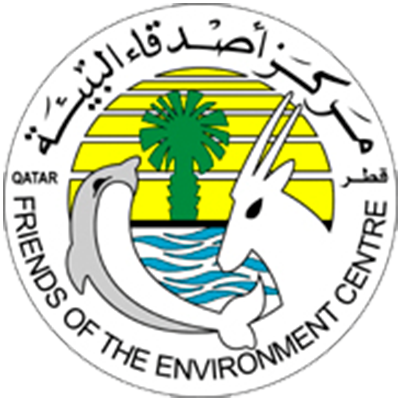الاسم: Pentaceraster mammillatus
الاسم الشائع:
الاسم العلمي: Pentaceraster mammillatus
التصنيف: الصف: الأسماك النجمية. الرتبة: المخمليات. العائلة: oreasterids (Oreasteridae).
القياس: يبلغ قطر المسافة بين كل تحت إبط وآخر ما بين 14.5-30 سنتيمتراً.
موطن:
يعيش هذا النوع في مناطق تحت المدية على الرمل الخشن أو ركام المرجان أو بالقرب من أو على أسطح الحيود المرجانية وعلى أعماق تتراوح ما بين 14-15 متراً. وفي مناطق المحار في شرق ساحل قطر يعتبر هذا النوع الأكثر تواجداً بين نجوم البحر. ويعرف بأنه نوع مفترس لمحار اللؤلؤ وله القدرة على فتح الصدفة وأكل المحار ودون ذلك فتتغذى بشكل رئيسي على الهوائم القاعية (الأحياء الدقيقة تنمو على الطحالب والأعشاب البحرية) كما تتغذى على البقايا العضوية والمواد العضوية الذائبة. وبما أن الأسماك النجمية لا تمتلك فم صلب فهي تقوم بإلتهام الطعام عن طريق إخراج معدتها عبر فمها إلى الخارج وبذلك تلتهم الفريسة وتفرز سوائل هاضمة من أجل تحويلها إلى سائل وبعد ذلك تمتص الكتلة المهضومة إلى الداخل مع معدتها. إن مرونة هيكلها يساعدها في تعديل وقفتها إذا ما قُلبت. يعرف عن هذا النوع قدرته الهائلة خاصة لتجديد الأذرع المفقودة أو المعطوبة، ومع أنهم لا يمتلكون أعين متطورة، فهي تمتلك بقع عينية وهي عبارة عن خلايا بصرية ذات صبغة حمراء وحساسة للضوء وتكون متوضعة على نهاية كل ذراع. وينتشر على الجلد خلايا عصبية حساسة للمس والتذوق وهي أكثر إنتشاراً حول ممصات الأقدام الأنبوبية.
التوزيع:
يتواجد هذا النوع في الساحل الشرقي لأفريقيا بما في ذلك مدغشقر وموريشوس وعبر البحر الأحمر والخليج العربي وصولاً إلى سيريلانكا وخليج البنغال وإلى المحيطين الهندي والهادئ.
حالة حفظ النوع:
لم يتم تقييم هذا النوع حتى الآن من قبل المجلس العالمي لصون الطبيعة.
الشرح:
يُظهر الشكل النجمي لهذا النوع والذي يمتلك خمسة أذرع مدببة متطورة تبرز من القرص المركزي خصائص التناظر الشعاعي الخماسي لشوكيات الجلد. هناك هيكل داخلي يتألف من صفائح من كربونات الكالسيوم أو عظيمات متصلة مع بعضها البعض بواسطة نسيج ضام معطية لها التركيب الصلب المرن. هناك صفان من الصفائح الجانبية الواضحة بين الأذرع والقرص والتي تطورت بشكل ملحوظ وتحمل أشواكاً تشبه مخاريطاً قصيرة مثلمة، وهناك صفة مميزة لهذا النوع وهي وجود أشواك في المنطقة البين شعاعية (تحت الآباط). الجسم ضخم مع مناطق شعاعية عريضة ومستديرة. يكون القرص مرتفعاً بشكل لافت ومتوج بخمس أشواك أسطوانية بحيث يكون هناك شوكة واحدة على كل صفيحة أساسية بالقرب من قاعدة كل ذراع. بقية الجزء العلوي مزدان بسلسلة من الحبيبات الصغيرة المستديرة المستطالة. الأذرع السميكة معتدلة الطول تنحدر جانبياً وتصبح مستديرة على الأطراف ومثلثية الشكل بمقطع عرضي. تمتلك الأذرع درنات أسطوانية قوية على الصفائح الجمجمية على سطحها العلوي ولها أخدود مفتوح يسمى ميزاب الحركة على السطح السفلي، حيث يمتد من الفم المركزي المتجه نحو الأسفل إلى كل ذراع وفي كل من هذه الأخاديد تراكيب تشبه الملامس وتدعى بالأقدام الأنبوبية، حيث تبرز من خلال فتحات في الصفائح الهيكلية إلى الخارج. إن الأقدام الأنبوبية أسطوانية الشكل ومجهزة بقرص شافط على نهايتها. وتعتبر الأقدام الأنبوبية زوائد طرفية للجهاز الوعائي المائي والذي يعتبر شبكة من القنوات المترابطة المملوءة بالسوائل والتي تستطيع أن تمتد وتنكمش بواسطة الضغط الهيدروليكي إضافةً إلى تقلص العضلات وبذلك تساعد في الحركة والتنفس والإمساك بالفريسة. يغطي سطح الجسم تراكيب كلسية صغيرة تشبه الكماشة وتسمى بالملاقط، والتي تبقي الجلد خالياً من الكائنات الصغيرة والشوائب. اللون متباين جداً، وحتى في نفس الجماعة، وعلى الأغلب يكون متجانس ويمكن أن يكون أحمر براق إلى أخضر أو رمادي غامق وغيره من الألوان، وتكون الأشواك والدرنات ملونة بألوان متباينة.








